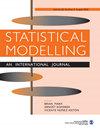基于分布和分位数回归的房地产估价多层次分析
IF 1.2
4区 数学
Q2 STATISTICS & PROBABILITY
引用次数: 1
摘要
房地产估价通常基于特征回归模型,其中房地产的预期价格根据其属性进行解释。然而,住房市场的投资者对房地产市场价值的分布(包括价格变化)同样感兴趣,即确定一处房产的属性对整个条件分布的影响。因此,我们考虑房地产估价的贝叶斯结构加性分布和分位数回归模型。在第一种方法中,潜在复杂的参数响应分布的每个参数都与结构化的加性预测器有关。相反,第二种方法进行得不同,并直接和非框架地对响应分布的任意分位数进行建模。所提出的两个模型都基于结构化加性回归的多级版本,从而利用了房地产数据的典型层次结构。我们在一项基于奥地利3000多套自住独栋住宅的详细案例研究中展示了所提出的方法,讨论了对由此产生的影响估计的解释,并根据其预测能力对模型进行了比较。本文章由计算机程序翻译,如有差异,请以英文原文为准。
A multilevel analysis of real estate valuation using distributional and quantile regression
Real estate valuation is typically based on hedonic regression models where the expected price of a property is explained in dependence of its attributes. However, investors in the housing market are equally interested in the distribution of real estate market values (including price variation), that is, determining the impact of attributes of a property on the entire conditional distribution. We therefore consider Bayesian structured additive distributional and quantile regression models for real estate valuation. In the first approach, each parameter of a potentially complex parametric response distribution is related to a structured additive predictor. In contrast, the second approach proceeds differently and models arbitrary quantiles of the response distribution directly and nonparametrically. Both models presented are based on a multilevel version of structured additive regression thereby utilizing the typical hierarchical structure of real estate data. We demonstrate the proposed methodology within a detailed case study based on more than 3 000 owner-occupied single family homes in Austria, discuss interpretation of the resulting effect estimates, and compare models based on their predictive ability.
求助全文
通过发布文献求助,成功后即可免费获取论文全文。
去求助
来源期刊

Statistical Modelling
数学-统计学与概率论
CiteScore
2.20
自引率
0.00%
发文量
16
审稿时长
>12 weeks
期刊介绍:
The primary aim of the journal is to publish original and high-quality articles that recognize statistical modelling as the general framework for the application of statistical ideas. Submissions must reflect important developments, extensions, and applications in statistical modelling. The journal also encourages submissions that describe scientifically interesting, complex or novel statistical modelling aspects from a wide diversity of disciplines, and submissions that embrace the diversity of applied statistical modelling.
 求助内容:
求助内容: 应助结果提醒方式:
应助结果提醒方式:


